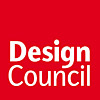UK Design Council on user-centred design and experience design
User-centred design
The central premise of user-centred design is that the best-designed products and services result from understanding the needs of the people who will use them. User-centred designers engage actively with end-users to gather insights that drive design from the earliest stages of product and service development, right through the design process. Psychologist Alison Black gives an insight into how a user-centred approach can lead to innovative products and services that deliver real consumer benefit.
Experience design
Experience design concentrates on moments of engagement between people and brands, and the memories these moments create. For customers, all these moments of corporate experience combine to shape perceptions, motivate their brand commitment and influence the likelihood of repurchase in the future. Brand experience has the power to engender a greater degree of empathy, trust and loyalty from both customers and employees. Ralph Ardill of the Brand Experience Consultancy gives an overview of how experience design delivers new insights into how brands are perceived.
Unfortunately the experience design section is strongly brand-focused and therefore company-centric, rather than people-centric, and the write-up is seriously criticised by Peter Merholz, president of Adaptive Path, in a reaction to this post entitled “Experience design is not about brands“: “For ‘experience design’ to truly succeed as a discipline, it will need to distinguish itself from brand strategy and design, and demonstrate its distinct value as a contributor to business. Unfortunately, the Design Councils attempt at definition simply muddles things further.“
Other sections that caught my eye:
- Roger Coleman explains how inclusive design ensures that goods, services and environments are accessible to more people.
- The ability of trends research to generate vital insights into customers’ and users’ future needs is making the practice increasingly important for all sectors. Trends expert James Woudhuysen explores the issues
- The UK services sector is growing, but service design and its management are often poorly planned, argues Bill Hollins. This article reveals how companies can gain competitive advantage by applying design techniques when creating and improving their services.
- Interaction design is the key skill used in creating an interface through which information technology can be manipulated, writes Nico Macdonald. As products and services are increasingly being created using information technology, interaction design is likely to become the key design skill of this century.





[…] Originally from Putting people first […]